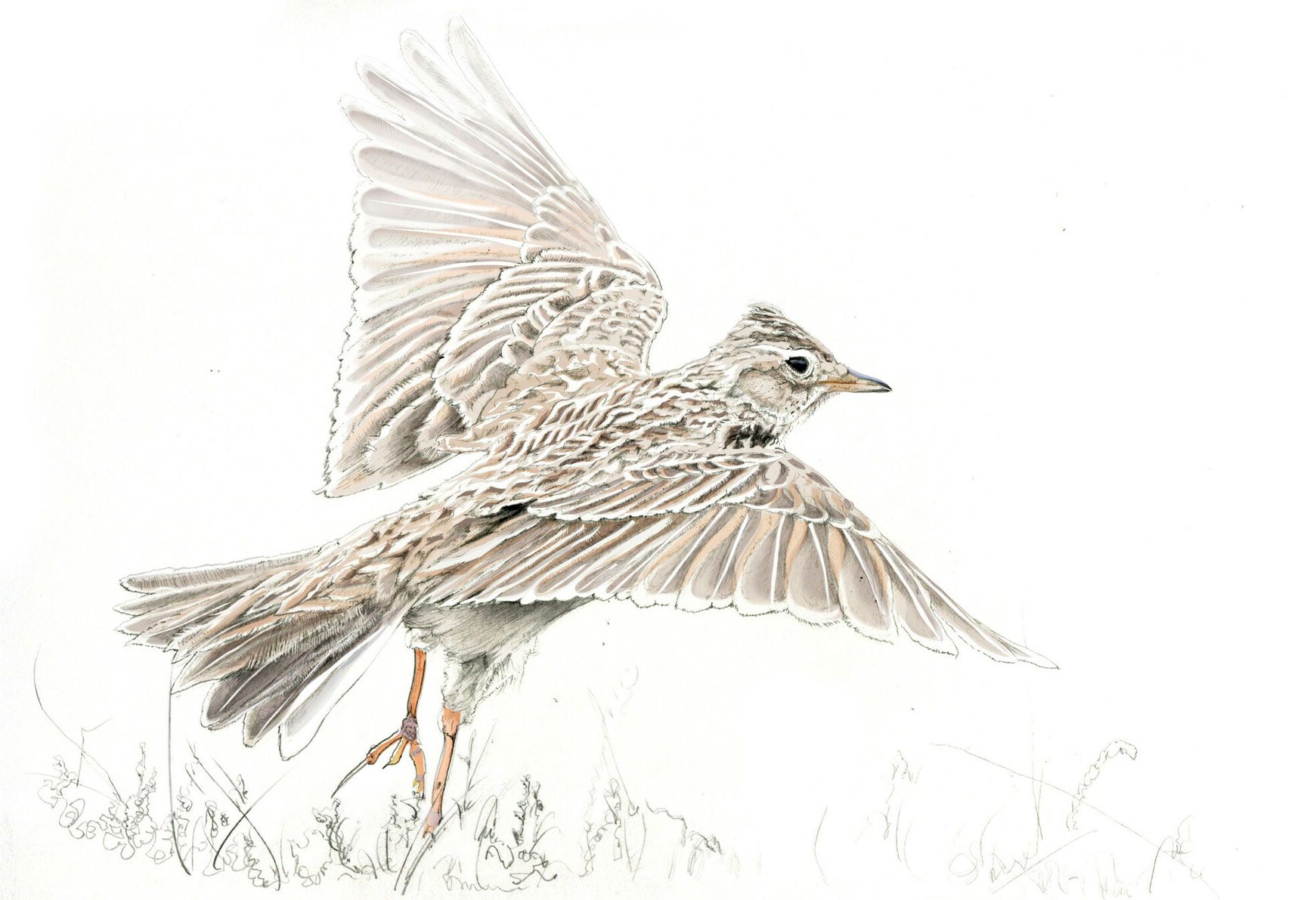
Alauda arvensis
Skylarks prefer open country with short vegetation, such as moorland and farmland.
Skylarks are mostly brown birds, about 18cm in length, with streaky upper parts and a small crest. Skylarks spend a lot of time on the ground but you are more likely to spot one hovering high up in the sky, singing continuously before plunging steeply downwards. Listen in the spring and summer for a lovely fast stream of notes, sometimes lasting as long as five minutes. Skylarks are often the first birds to sing at dawn, hence the expression ‘up with the lark’.
Skylarks eat worms, insects and their larvae, spiders and slugs. They also eat seeds, the leaves of root crops and some wild flowers. They nest on the ground in a small hollow amongst short vegetation. Skylarks usually keep the same mate year after year. The female builds a nest shaped like a cup and lined with grass and leaves. She lays 3 to 5 eggs in late April or May and keeps them warm for about 11 days. When the chicks hatch, the male helps to feed them, and they leave the nest after about 10 days.
In many parts of Britain skylark numbers have dropped by up to a half in recent decades, mostly because of changes in farming. Pesticides and herbicides kill the insects and wild flowers that form the skylarks’ diet. In the North York Moors National Park skylark numbers are thought to be fairly stable. This may be because there is more open moorland and farmland in this area, which suits the skylark better.
The National Park Authority works with land managers to improve habitats for birds and other wildlife.
You can help look after skylarks and other ground nesting birds by keeping dogs on leads and not getting too close to nest sites.